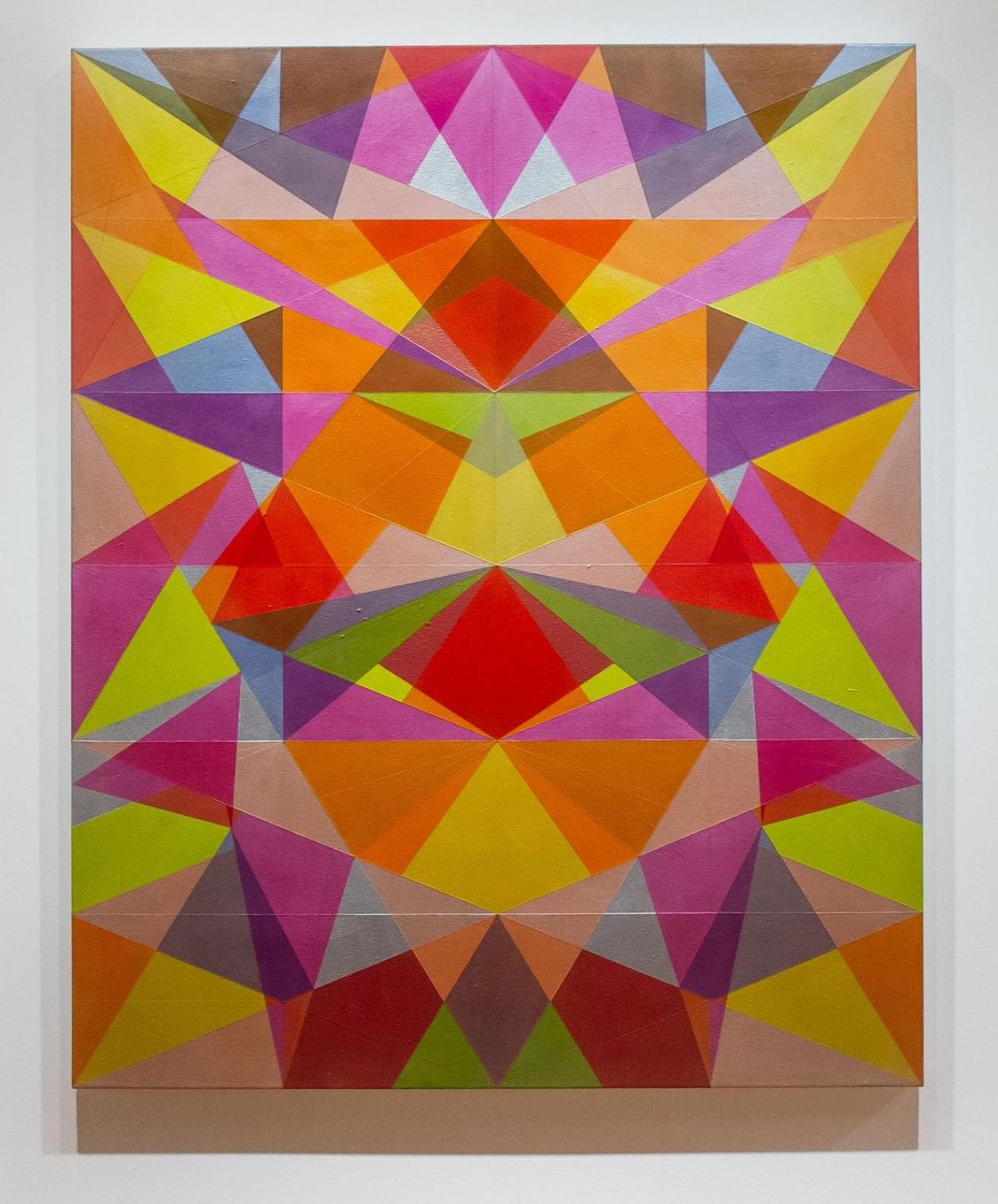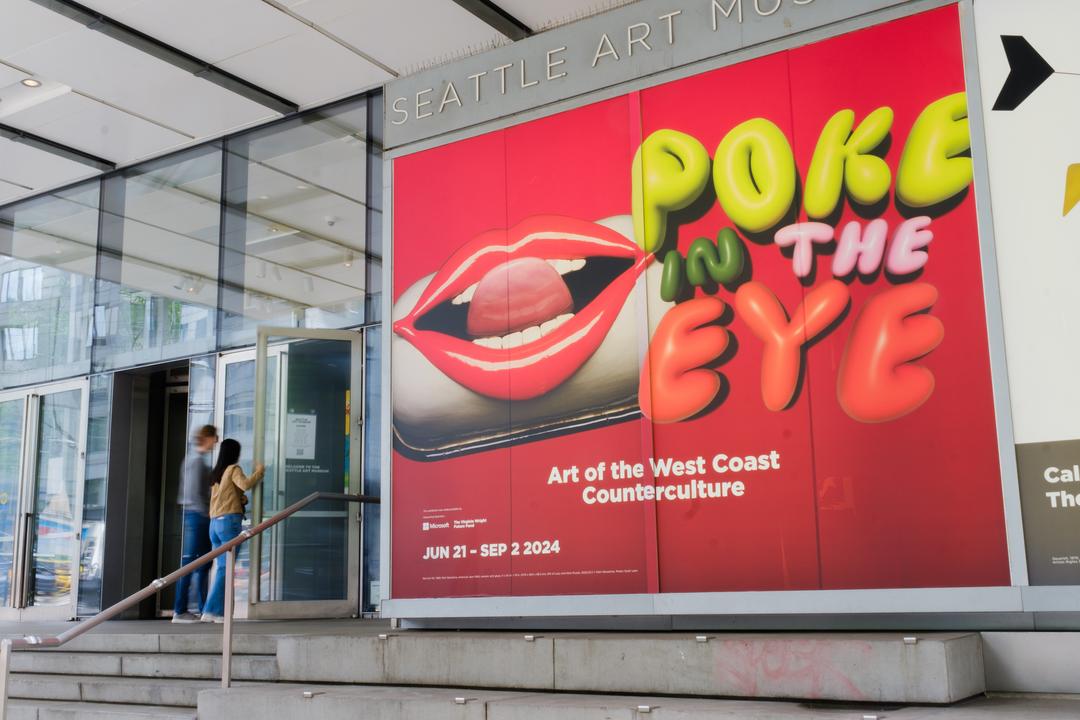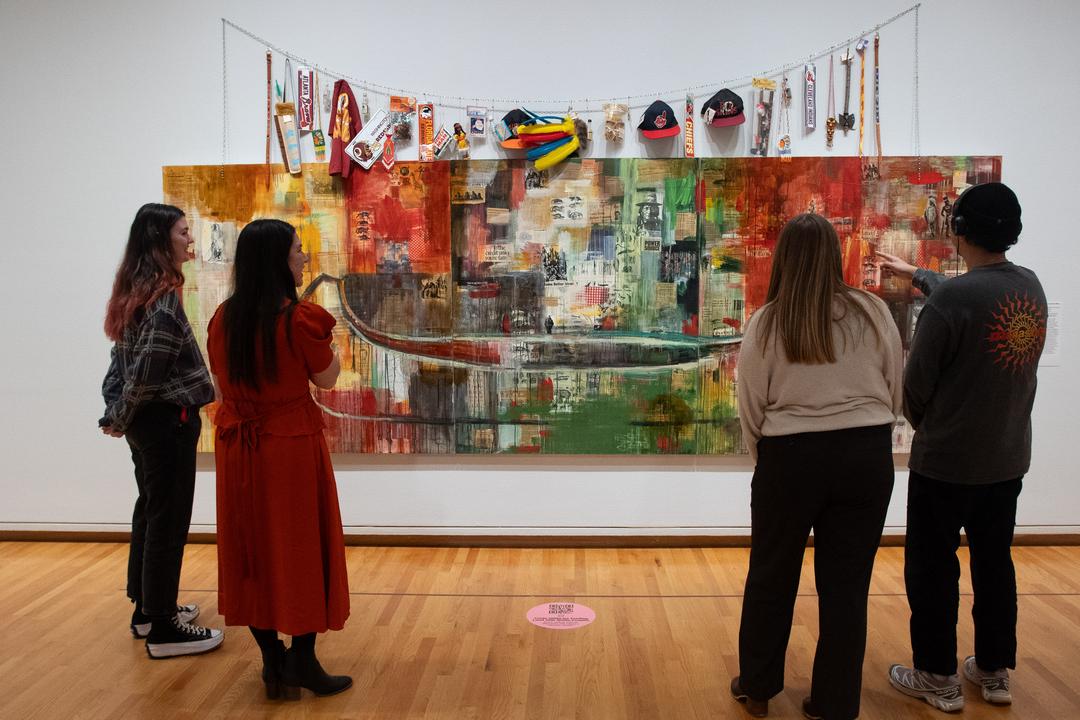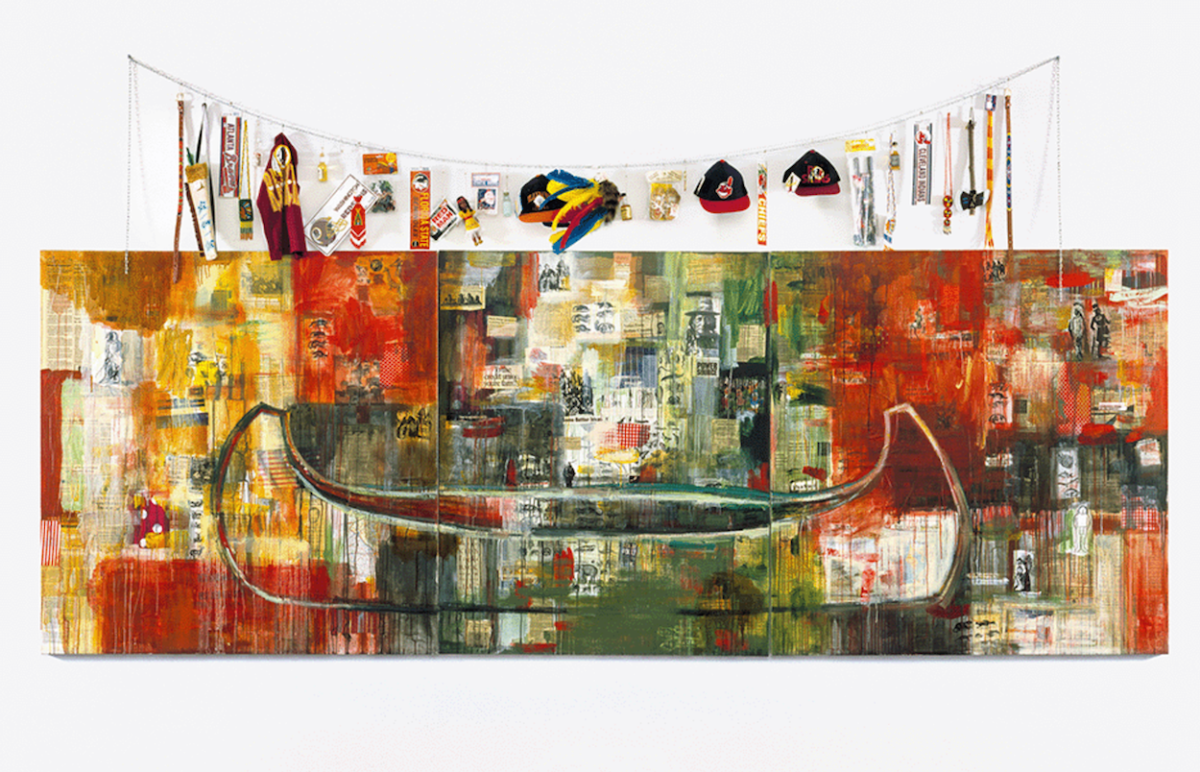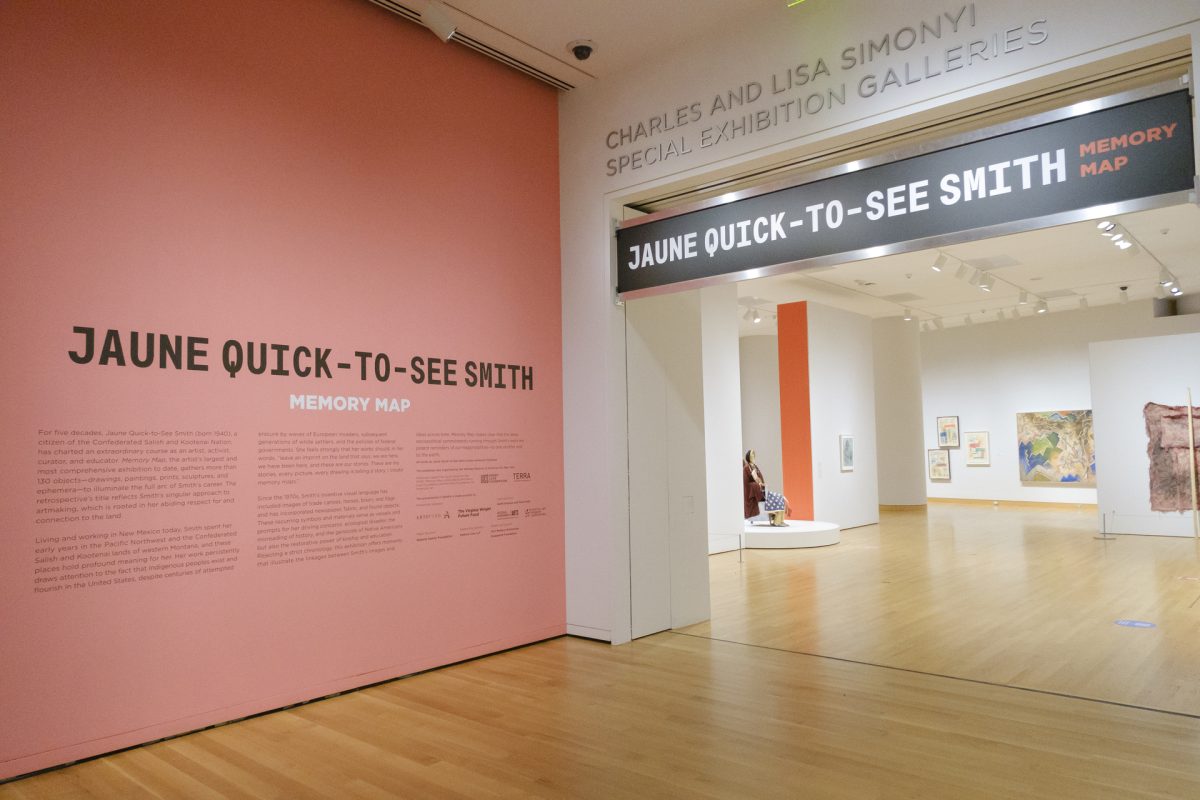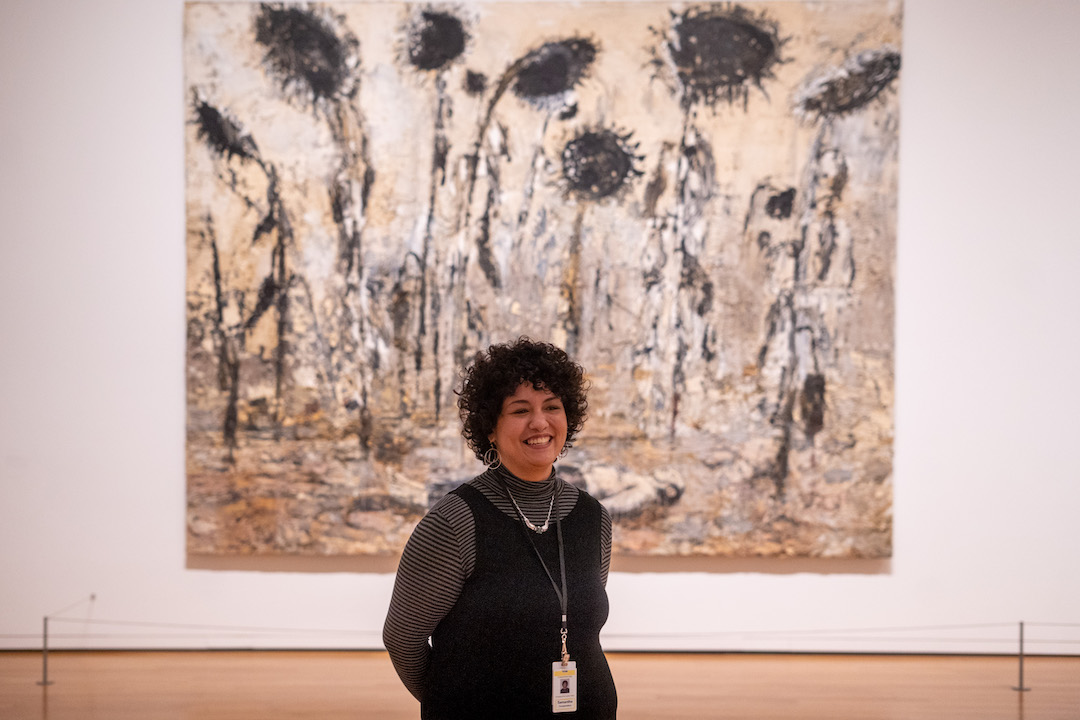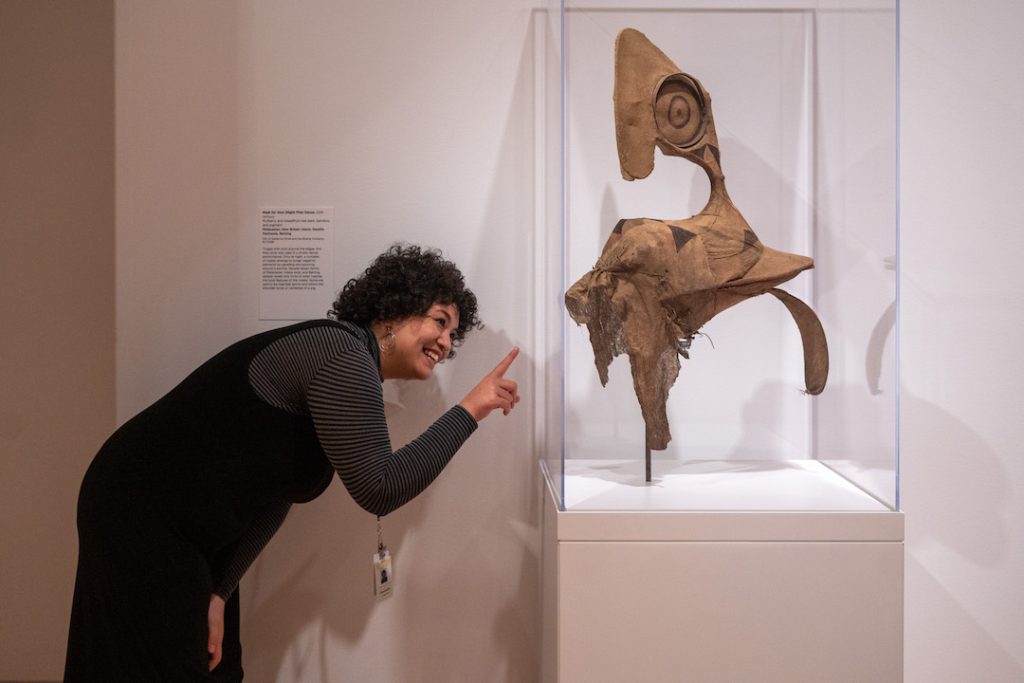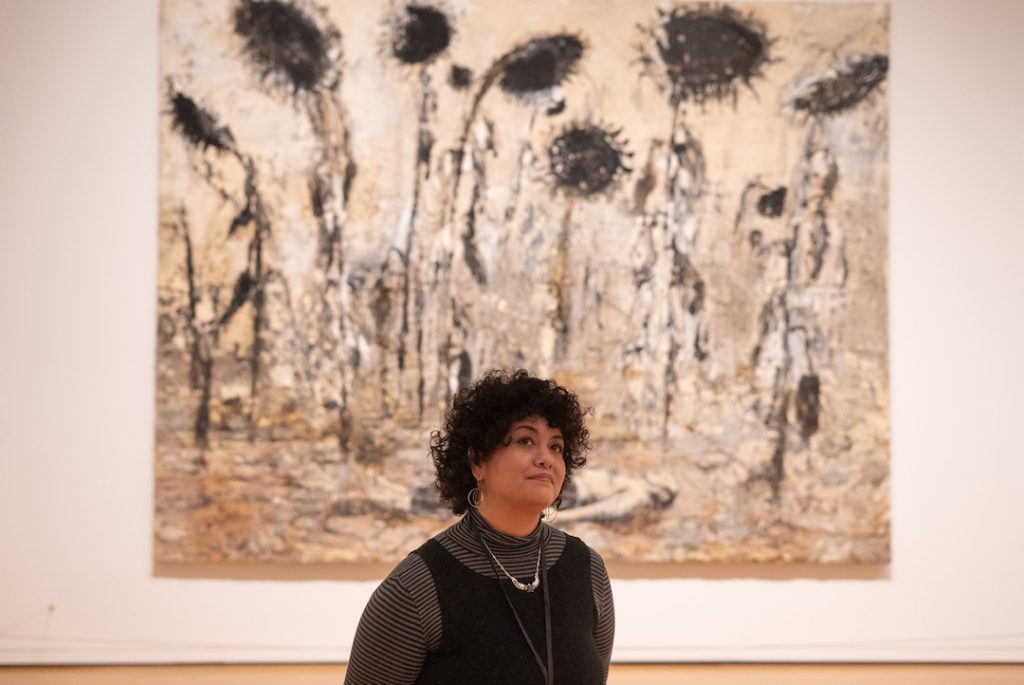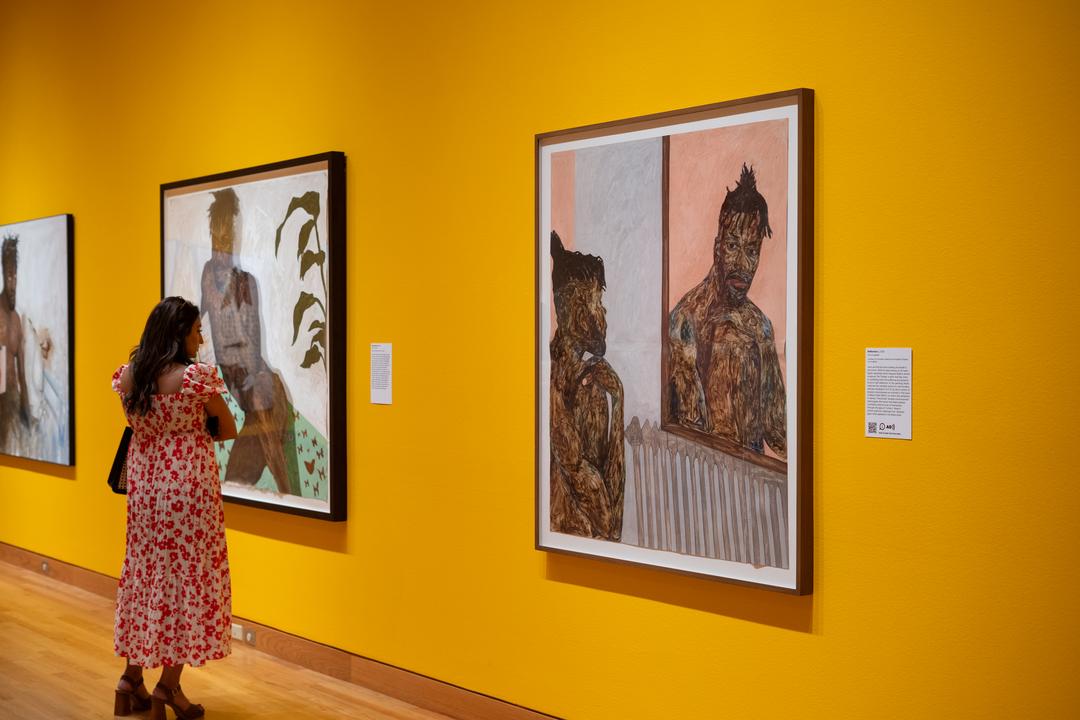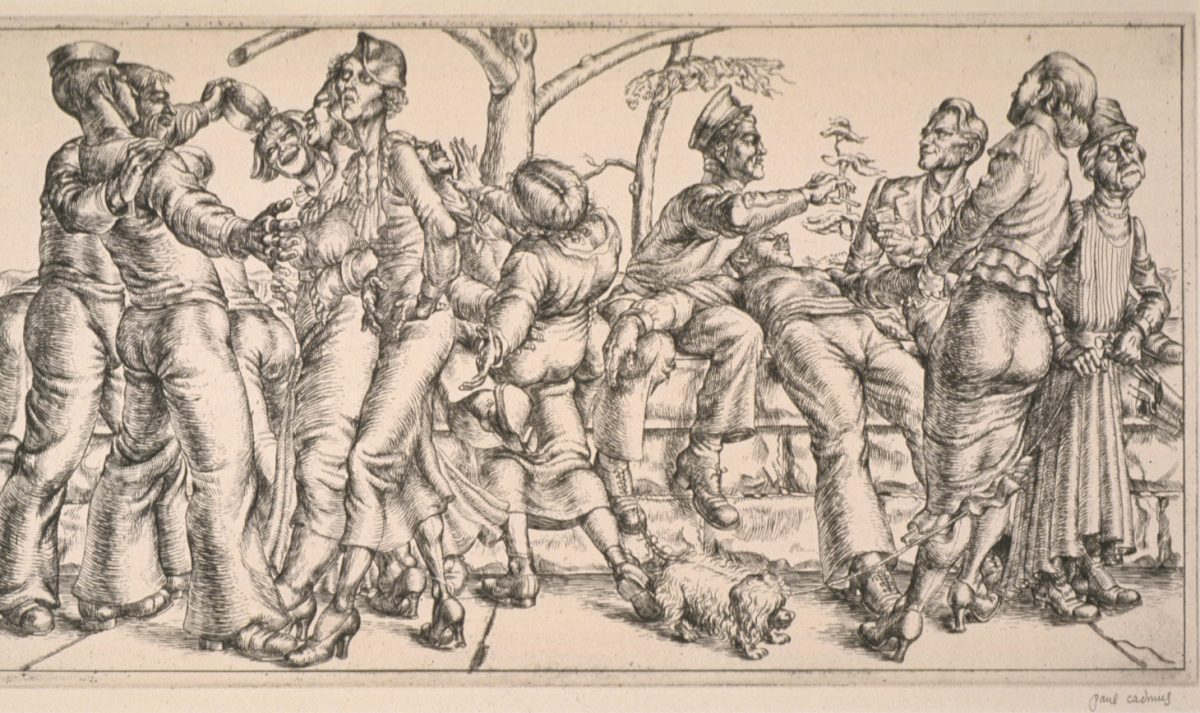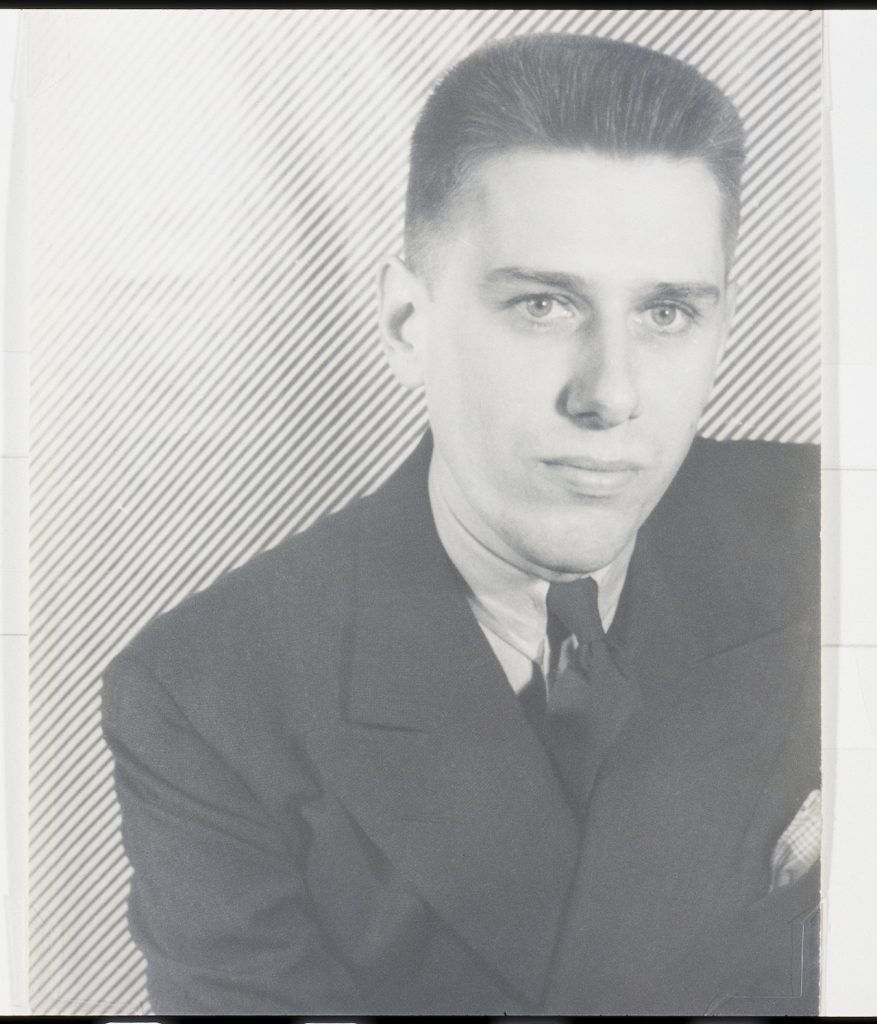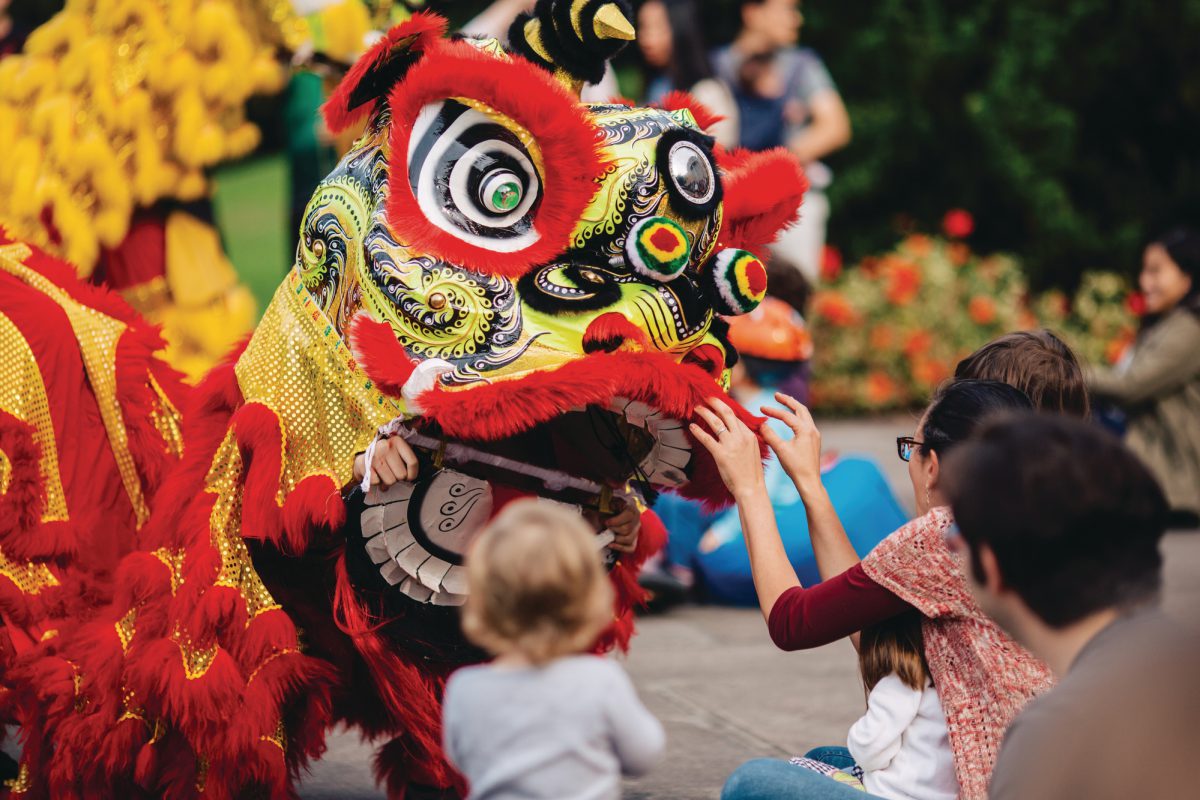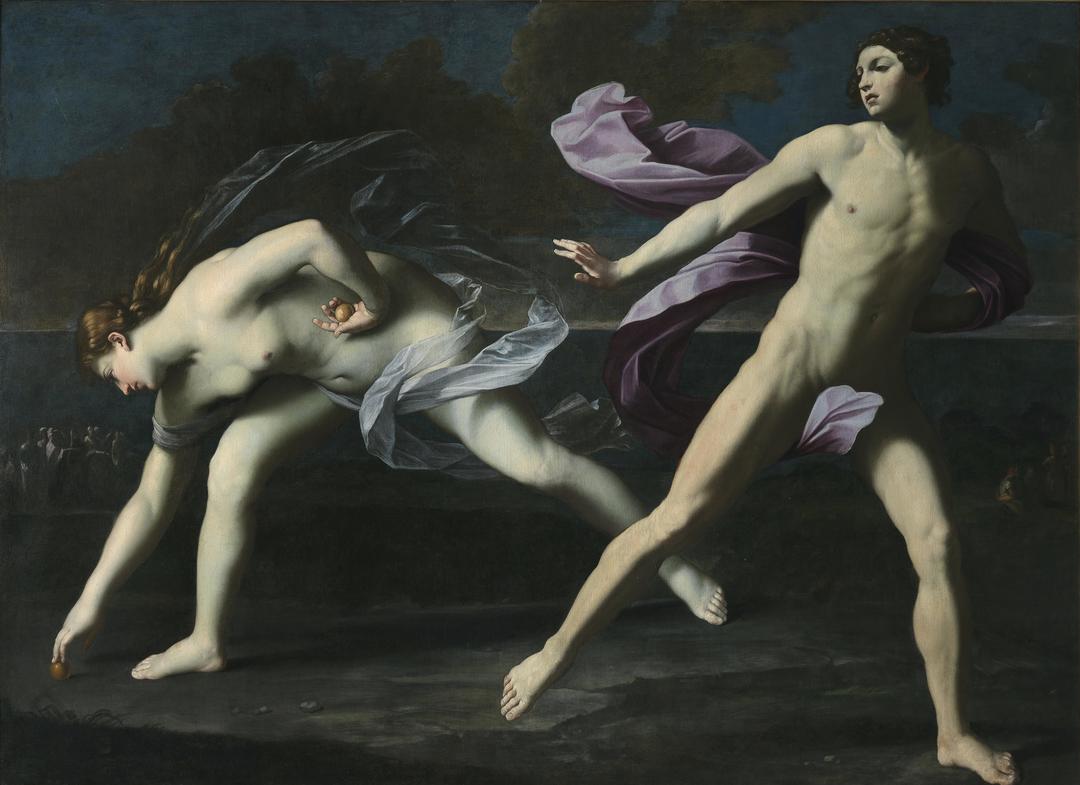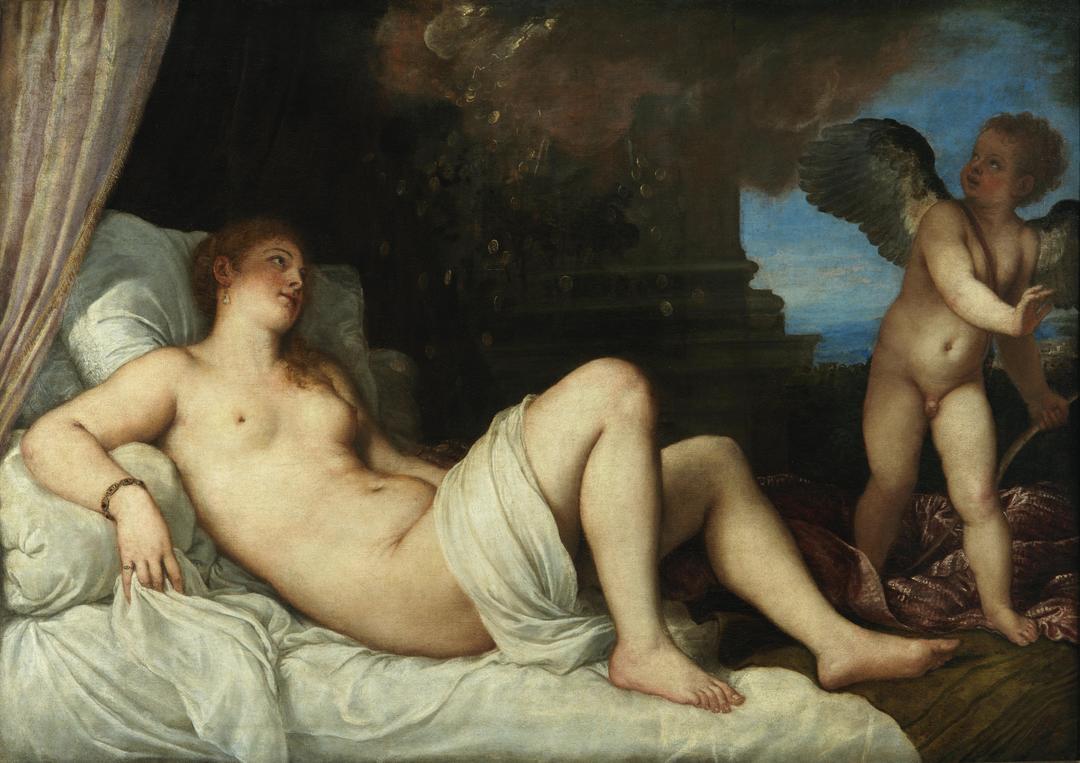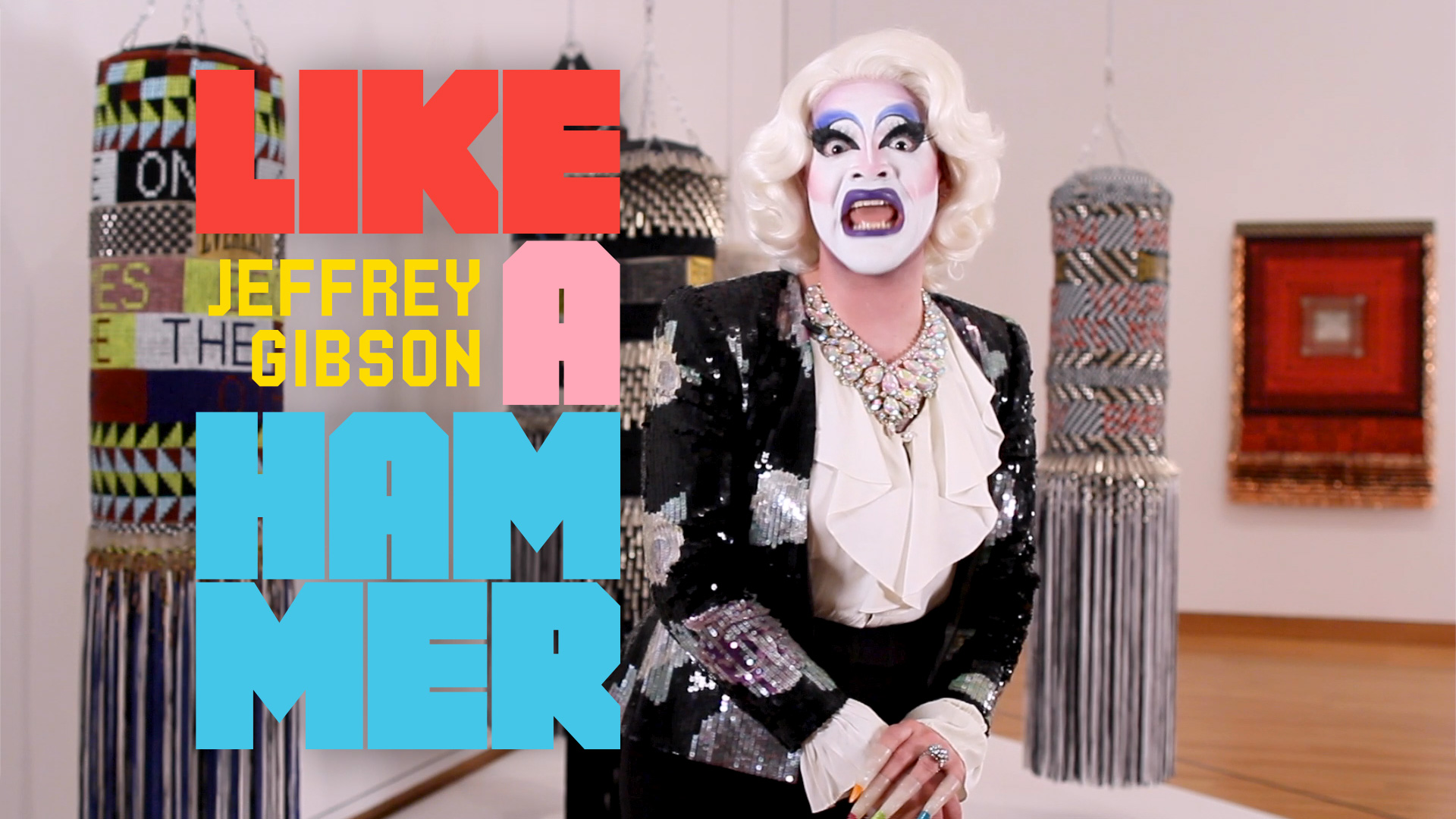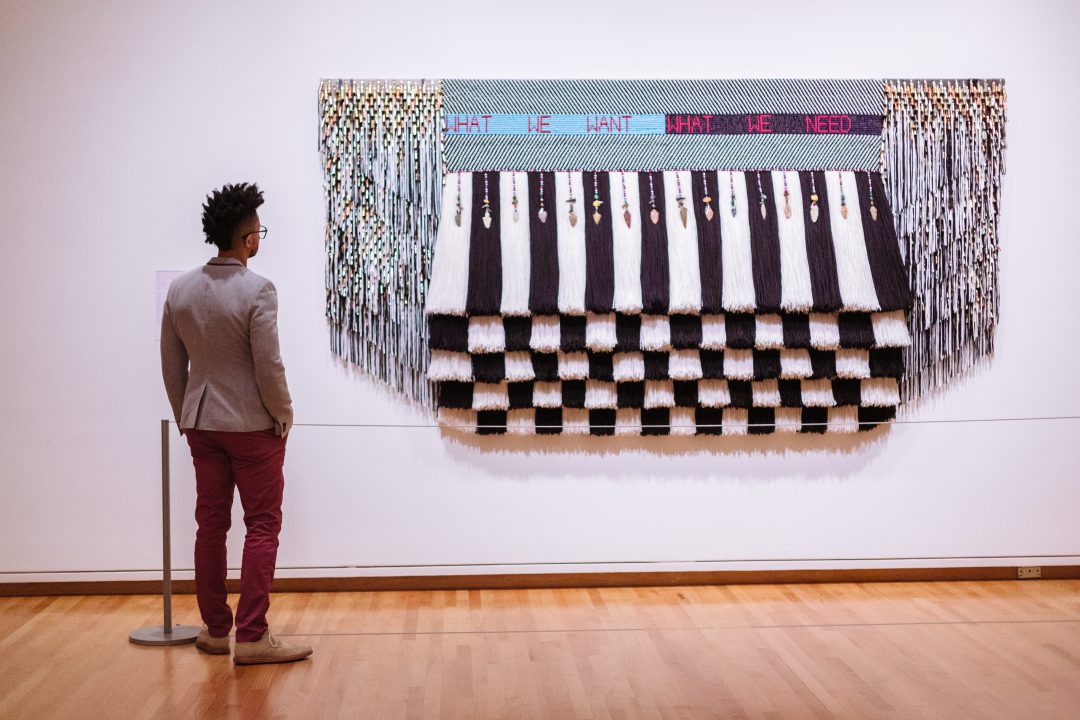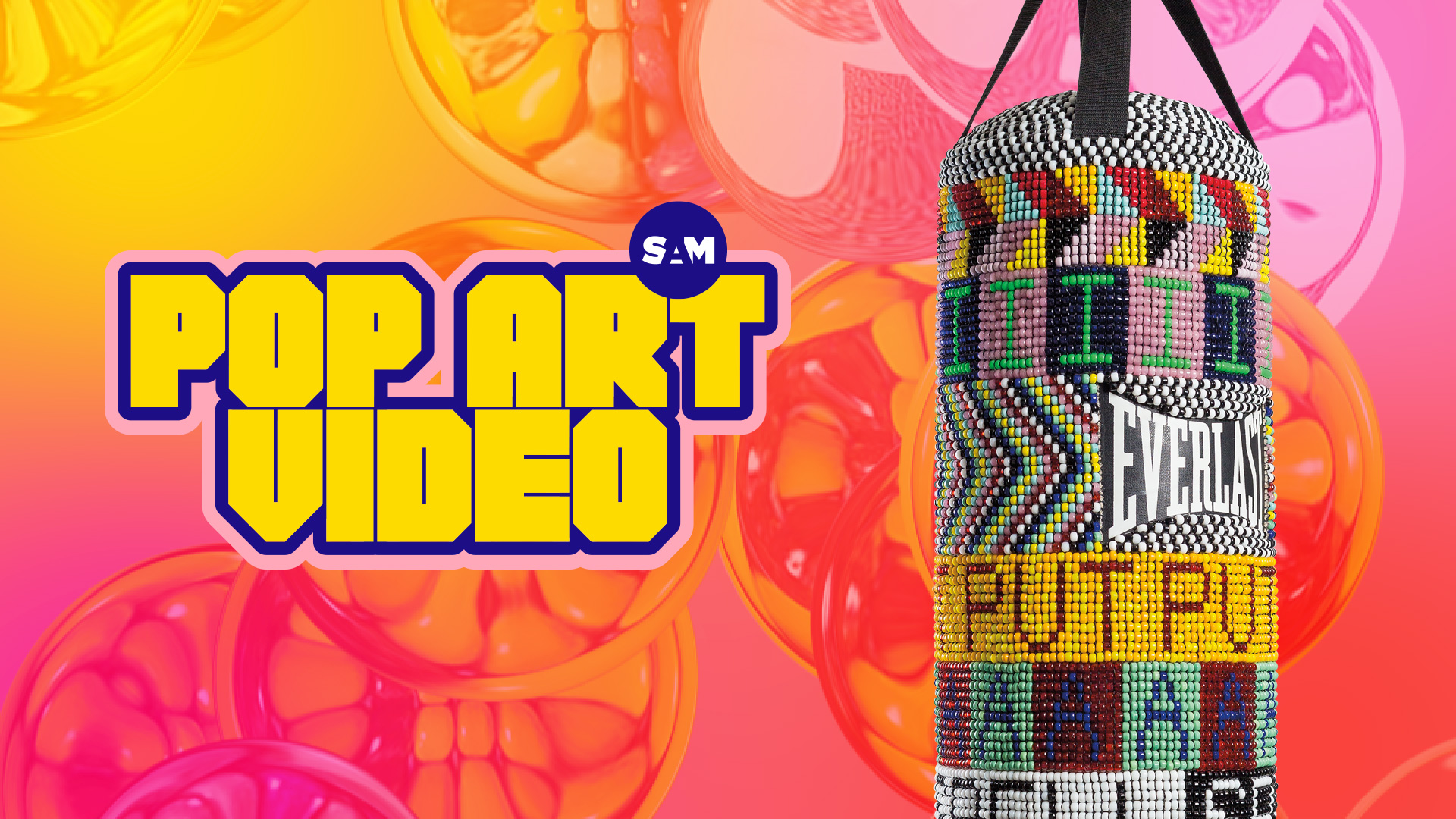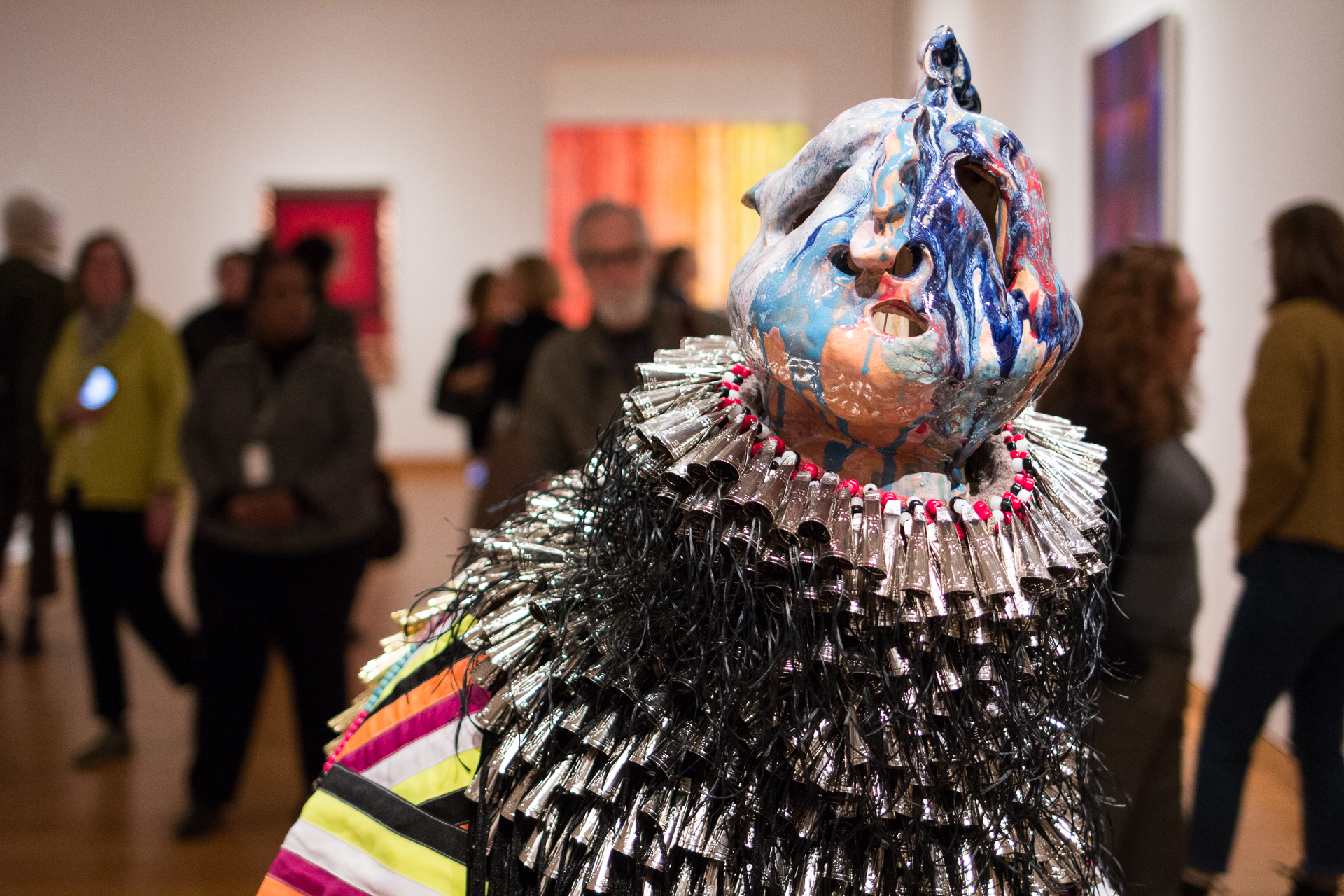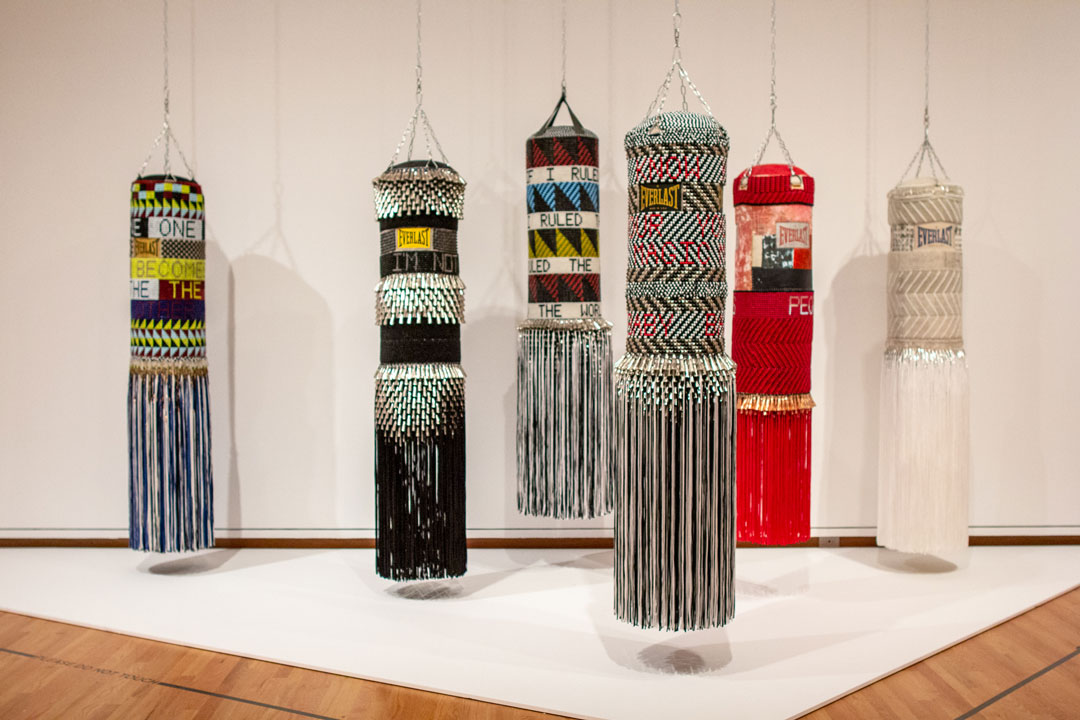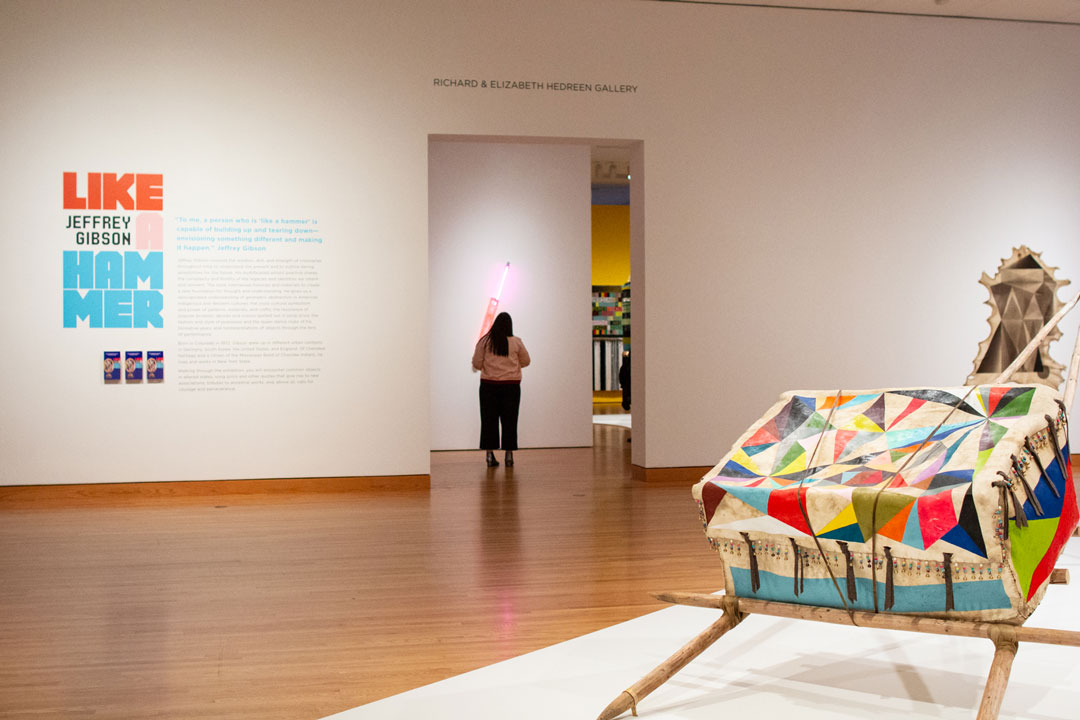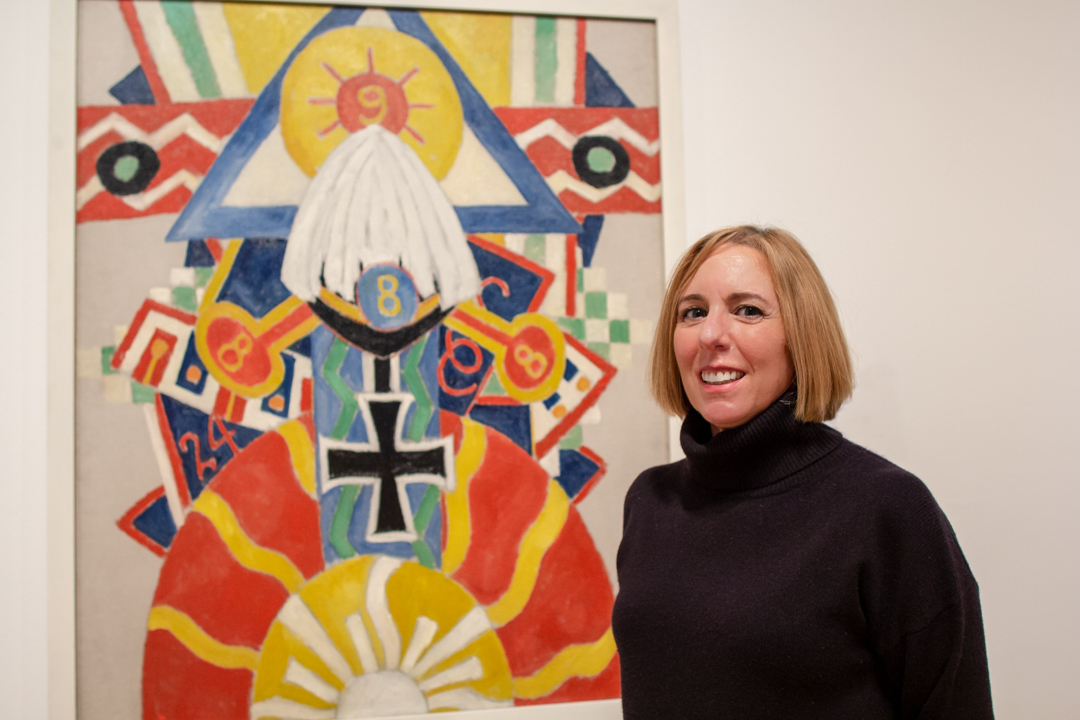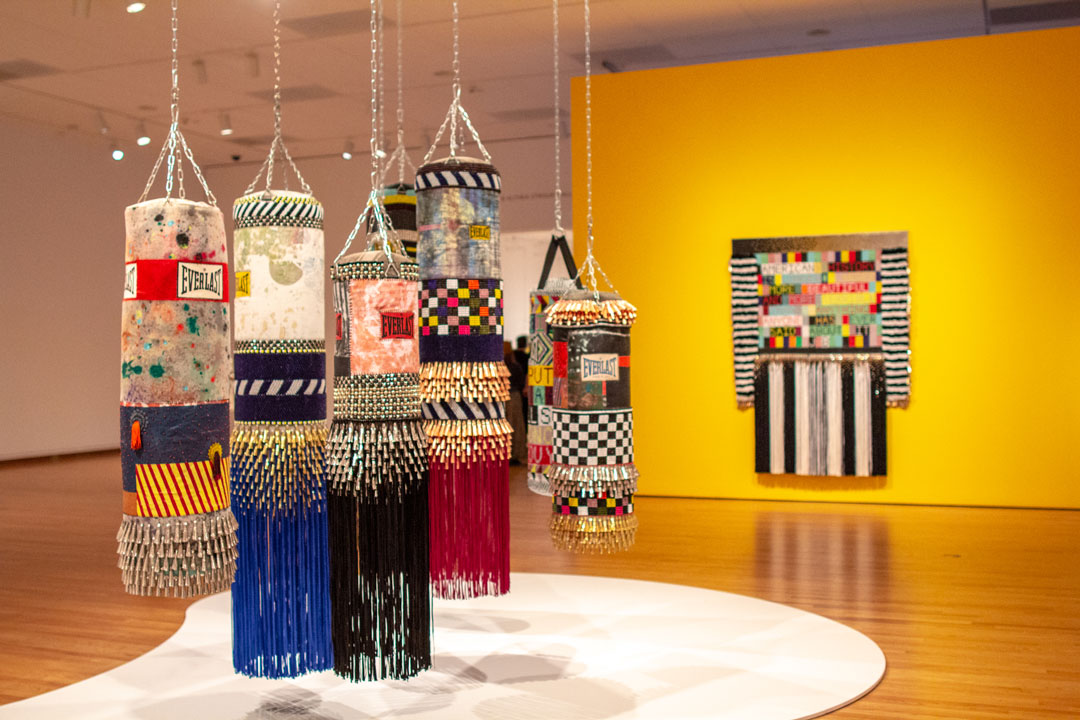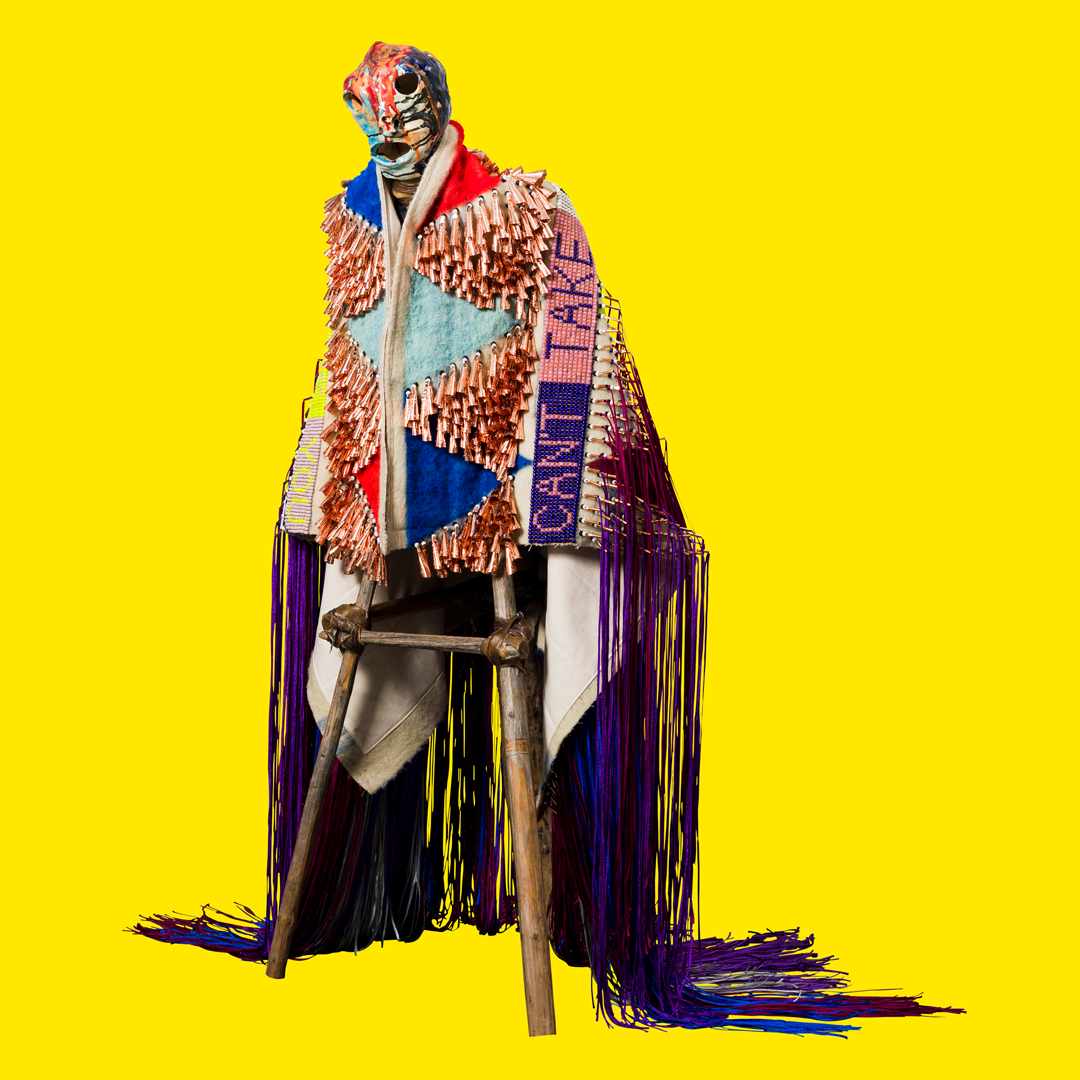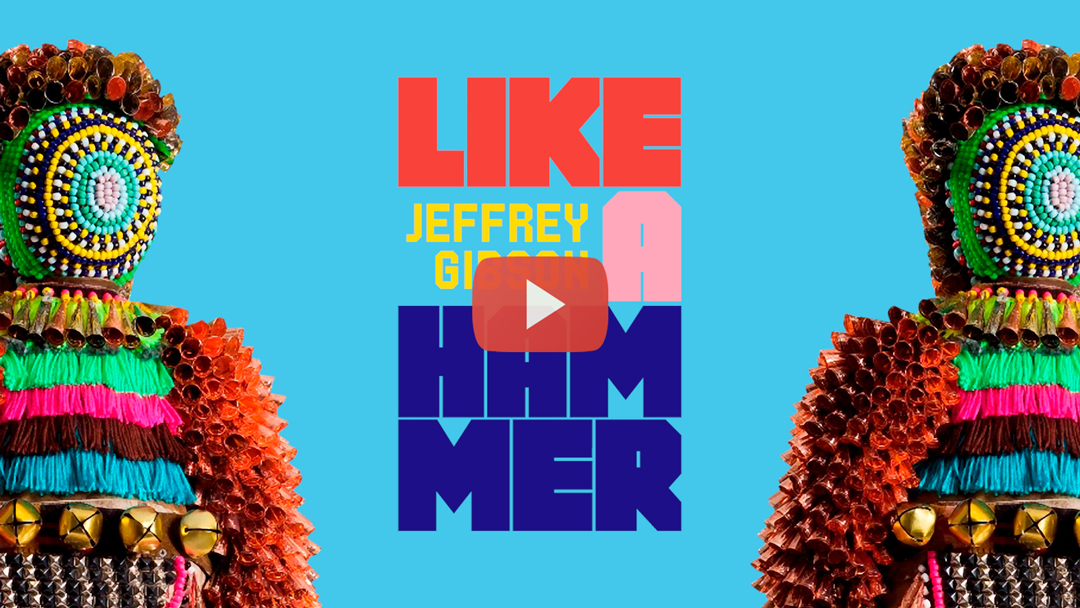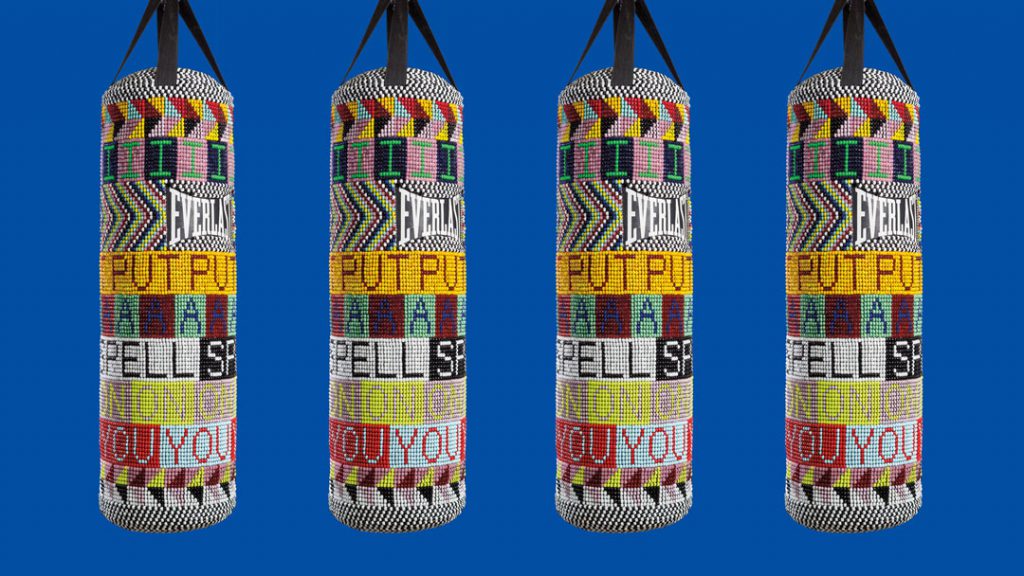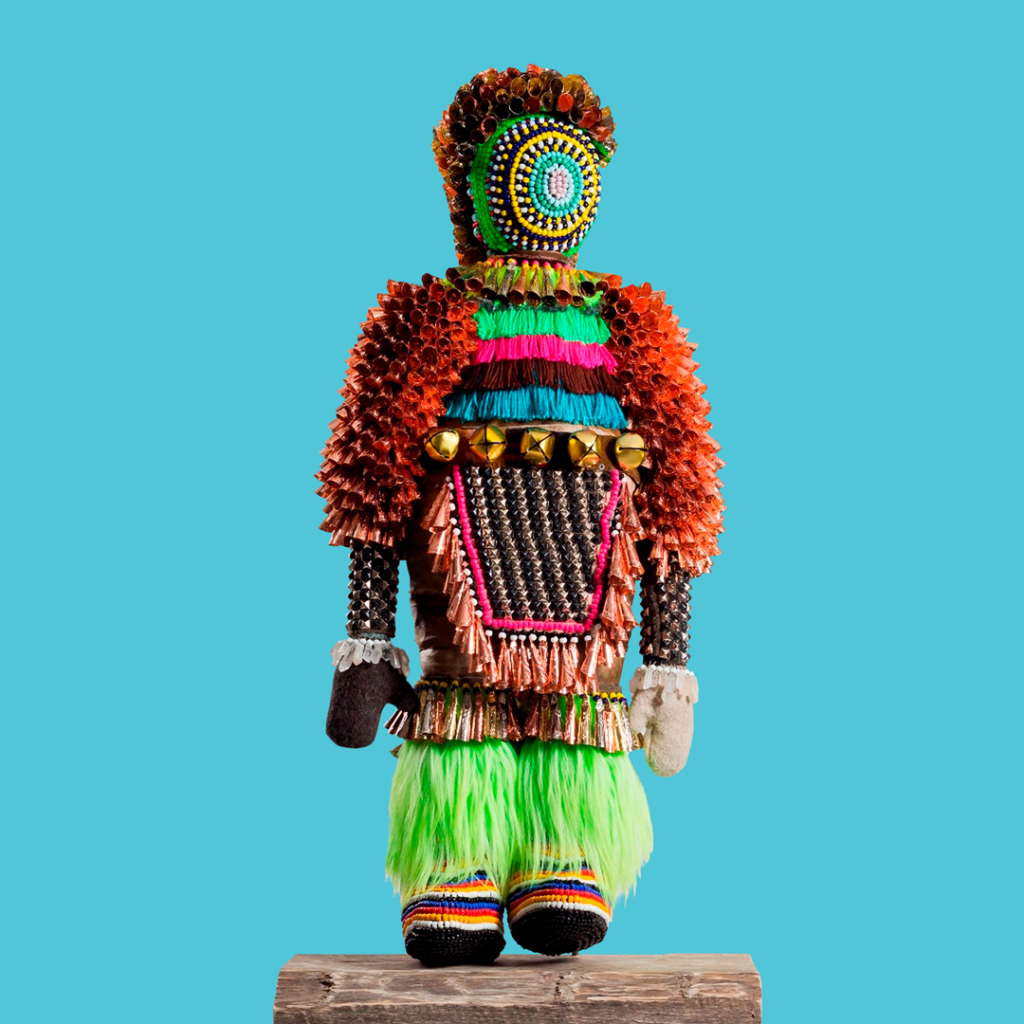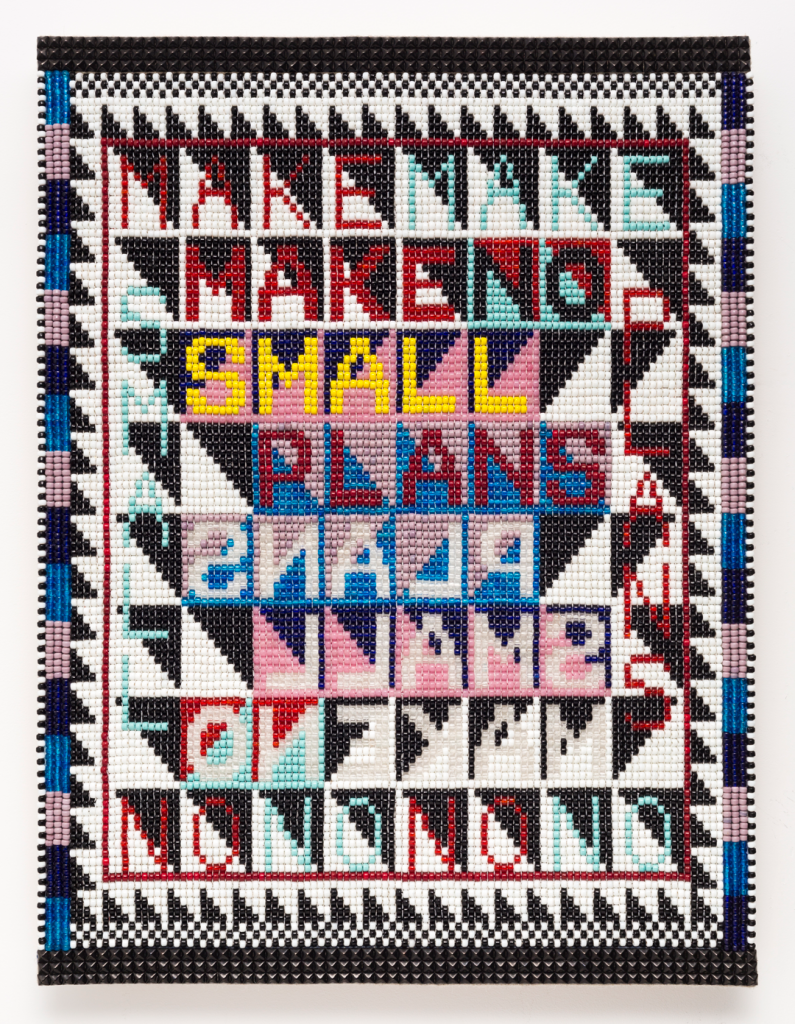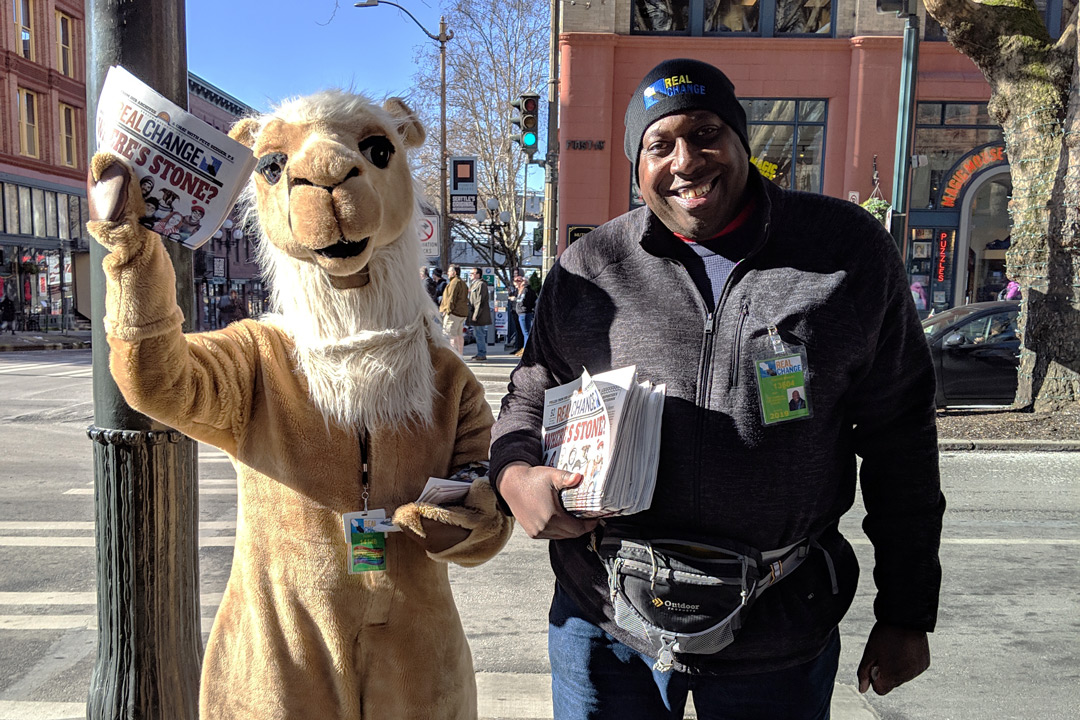SAM Celebrates Pride: Between Rabbit and Fox
In honor of Pride Month, SAM Blog features reflections by SAM voices on collection artworks that explore LGBTQIA+ art and artists. Queer lives matter every day of the year, but this month is a particular opportunity to celebrate histories of joy, advocacy, and resistance. Check out more Pride-related content on SAM Blog, including another object spotlight and a list of queer film recommendations curated by SAM’s LGBTQIA+ affinity group.
Jeffrey Gibson (b. 1972) foregrounds his Indigenous, queer identity in his artwork, often with bold colors and materials that make his personal history and intentions undeniable. As Gibson has noted in many of his interviews, he celebrates a state of “in-between-ness”: between cultures, between aesthetics, and between normative gender expectations.1
Gibson is also in-between in a few places at SAM—Gibson’s 2017 work, Between Rabbit and Fox, is on view on the third floor, in the space between the modern and contemporary galleries and American Art: The Stories We Carry.
This large abstract painting on canvas depicts a kaleidoscope of rainbow colors, refracted in a vibrant pattern. Although at first the painting seems like a smooth solid surface, its raised lines cut through different shapes and shimmery paints in the center to reveal the texture of the canvas. Looking closely, every diagonal is intentional, forming more and more triangles, and they create the effect of overlapping pieces and colors that change as they are layered.
As a painter, Gibson draws upon the major art historical movements of modernism and abstraction that explored minimalism and color theory, including the work of Josef Albers, Robert and Sonia Delaunay, Al Held, and Barnett Newman, all of whose works are in SAM’s collection.
Yet abstraction has long been a part of Native American artistic traditions as well, adorning many types of functional and cultural objects, such as Navajo textiles and Osage ribbonwork.2 Between Rabbit and Fox also references Gibson’s own earlier abstract paintings on hide, where he directly connected abstraction to Indigenous history by painting upon this culturally significant material. In the same room as Between Rabbit and Fox, you can see contemporary Tlingit/Unangax artist Nicholas Galanin’s work on deer hide, Architecture of return, escape (The British Museum) (2022).
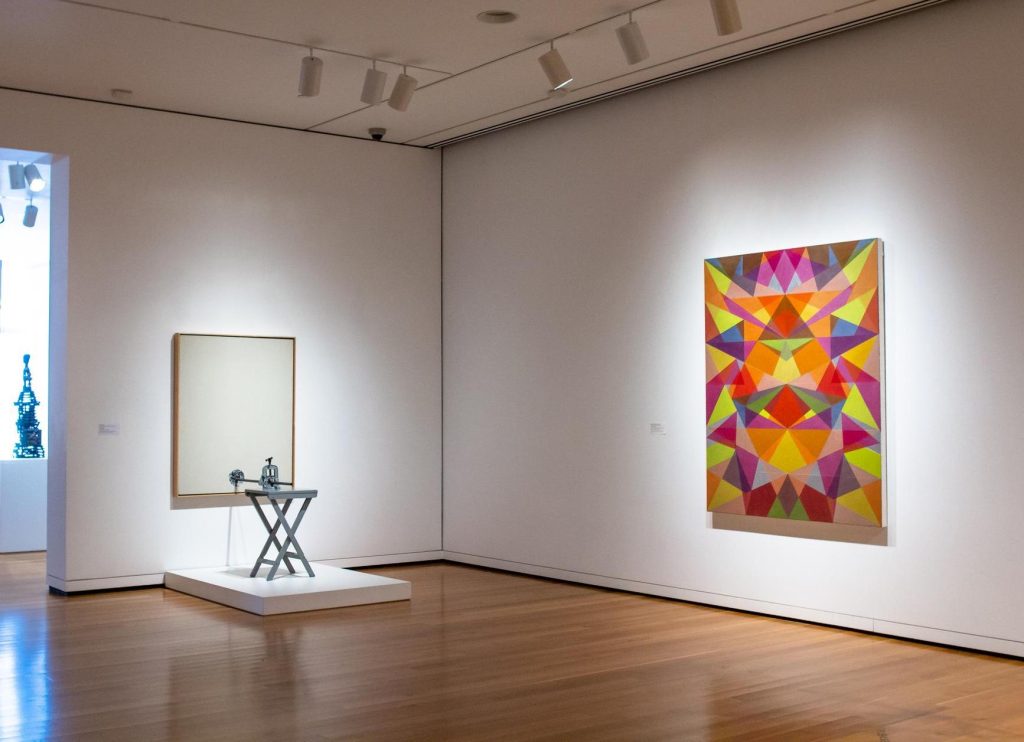
Gibson grew up in Germany and South Korea, among other places with his father’s military assignments, but came back to the US to attend the School of the Art Institute, Chicago, for his BFA, and then the Royal College of Art, London for his MA in painting. While growing up abroad, he felt he was treated as an “American,” but back at home in the US, he was seen only as Native American.3
Gibson is of Choctaw and Cherokee lineage, but didn’t grow up on a reservation. Many Americans he encountered had assumptions about a monolithic Native American culture and artistic aesthetic. Facing these reductive stereotypes, Gibson felt limited by this necessity to explain Native American art and concepts to an unaware audience, but also wanted to make work that reflected his identity. He found there was even less acceptance for a queer Indigenous man and artist.4
Instead of trying to avoid representing these identities in his art, Gibson came to a realization that he needed to incorporate them all and create a new path for himself in the art world. Around 2011, Gibson began reaching out to other Native American communities to learn about and collaborate on artworks that involved beadwork and drum making.5 He chose to use these techniques and make works on animal hide rather than on canvas, and he incorporated text and pop culture references to make his messages more visible.
Gibson’s work often addresses US history and the government’s failings toward Native Americans as well as queer communities. His other work in SAM’s collection, IF I RULED THE WORLD (2018), is a repurposed punching bag covered with beading, fringe, and metal jingles, and embedded with the title of a song by the rapper Nas. Here, Gibson also uses abstract geometric decoration with bands of primary colors (red, blue, and yellow) interrupted by black triangles.
The punching bag evokes physical action and even a sense of violent masculinity, which is immediately undercut by the delicate and detailed ornamentation that Gibson applies. He questions gender identity by using techniques like beading that are associated with women makers, as well as integrating quotes from queer club and music scenes and performing in gender-bending costumes he designs. Combining popular culture, canonical art influences, and Indigenous art forms and materials, Gibson has forged a new way forward that combines his identities with activism. The Seattle Art Museum exhibited a survey show of Gibson’s work in 2018, LIKE A HAMMER, and this year, Gibson was selected to represent the United States at the Venice Biennale, one of the largest and oldest international art fairs. Gibson’s presentation, the space in which to place me, was the first solo show by a Native American artist at the prestigious event. With this platform, Gibson has brought his queer, Indigenous identity to the forefront, raising issues and history that his communities and all of us have to face in making a more just world.
– Nicole Block, SAM Collections Associate
1 “Innovation and Tradition: Jeffrey Gibson Interviewed by Emily Zimmerman,” Bomb Magazine, May 6, 2019, https://bombmagazine.org/articles/innovation-and-tradition-jeffrey-gibson-interviewed.
2 John P. Lukavic, “What Should Have Been, What Is, and What Will Be,” Jeffrey Gibson: Like a Hammer. Munich, London, New York: Denver Art Museum, with DelMonico Books/Prestel, 2019; p. 29.
3 David Pagel, “Jeffrey Gibson: American. Native American. Gay. An artist’s life outside labels,” Los Angeles Times, October 7, 2017, https://www.latimes.com/entertainment/arts/la-ca-cm-jeffrey-gibson-20171007-htmlstory.html.
4 “Material & Identity Merge in Jeffrey Gibson’s ‘Like A Hammer’ at Seattle Art Museum.” YouTube January 31, 2019. https://youtu.be/-RrqDSZKtLQ?si=1NN66Iigx6HO0685.
5 Anne Ellegood. “Jeffrey Gibson: Critical Exuberance,” Jeffrey Gibson: Like a Hammer. Munich, London, New York: Denver Art Museum, with DelMonico Books/Prestel, 2019; pp. 83-84.
Consider supporting our Community Pass Program partners who serve queer communities:
Celebrate Pride Month in Seattle with these suggested events:
Sat Jun 22
Youth Pride Disco
Break out your disco wear for this LGBTQIA+ Pride party, planned for and organized by LGBTQ+ youth between the ages of 13 and 22! Join us for drag performances, great music, friend-making activities, food and soft drinks, a quiet room, and more.
Through Sun Jun 23
Jinkx Monsoon and Major Scales: Together Again, Again!
Experience the comedy, music, and saucy stylings of two of the Pacific Northwest’s standout drag entertainers, in this wildly hilarious extravaganza set in an apocalyptic future. Check the event calendar for information about performances for teens, ASL interpretation, captions, and masking.
Fri Jun 28
Trans Pride Seattle 2024
Started in 2013, Trans Pride Seattle is an annual event organized by Gender Justice League. Visit the Volunteer Park Amphitheater from 5 to 10 pm for live music, community speakers, performances, and a resource fair all dedicated to increased visibility, connection, and love of the Seattle-area TwoSpirit, Trans, and Gender Diverse (2STGD) community.
Sat Jun 29
PrideFest Capitol Hill
Spanning six blocks of Broadway and Cal Anderson Park, this all-day market features queer local businesses, beer gardens, family and youth programming, and three stages with an unforgettable lineup of live performances.
Sun Jun 30
Seattle Pride Parade
Spend the final day of June by taking part in the 50th annual Pride Parade led by grand marshals Sue Bird and Megan Rapinoe. Then, head over to Seattle Center for the can’t-miss performances, hundreds of acts, beer gardens, food vendors, a new family area—and dancing in the iconic International Fountain.
Visit the official Seattle Pride website for even more suggested events.
Photos: Natali Wiseman.
